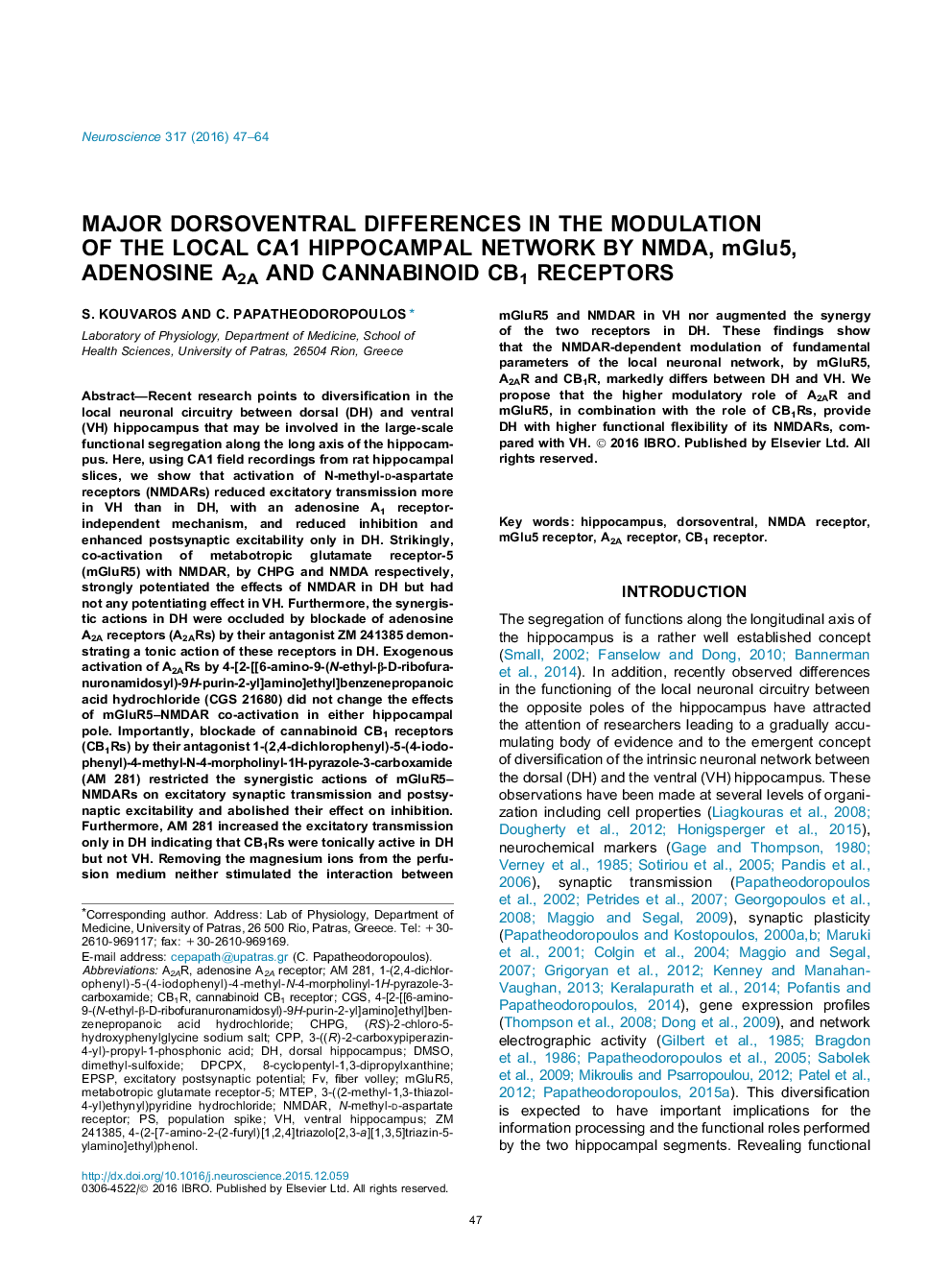| کد مقاله | کد نشریه | سال انتشار | مقاله انگلیسی | نسخه تمام متن |
|---|---|---|---|---|
| 4337392 | 1614759 | 2016 | 18 صفحه PDF | دانلود رایگان |

• Activation of NMDAR reduces transmission more in VH than in DH.
• Activation of NMDAR enhances excitability and reduces inhibition in DH but not VH.
• The mGluR5 potentiates the synergistic effects of NMDAR in DH but not VH slices.
• The A2AR exerts permissive role on mGluR5–NMDAR synergy in DH only.
• CB1R participates in mediating the synergistic effects of mGluR5–NMDAR.
Recent research points to diversification in the local neuronal circuitry between dorsal (DH) and ventral (VH) hippocampus that may be involved in the large-scale functional segregation along the long axis of the hippocampus. Here, using CA1 field recordings from rat hippocampal slices, we show that activation of N-methyl-d-aspartate receptors (NMDARs) reduced excitatory transmission more in VH than in DH, with an adenosine A1 receptor-independent mechanism, and reduced inhibition and enhanced postsynaptic excitability only in DH. Strikingly, co-activation of metabotropic glutamate receptor-5 (mGluR5) with NMDAR, by CHPG and NMDA respectively, strongly potentiated the effects of NMDAR in DH but had not any potentiating effect in VH. Furthermore, the synergistic actions in DH were occluded by blockade of adenosine A2A receptors (A2ARs) by their antagonist ZM 241385 demonstrating a tonic action of these receptors in DH. Exogenous activation of A2ARs by 4-[2-[[6-amino-9-(N-ethyl-β-D-ribofuranuronamidosyl)-9H-purin-2-yl]amino]ethyl]benzenepropanoic acid hydrochloride (CGS 21680) did not change the effects of mGluR5–NMDAR co-activation in either hippocampal pole. Importantly, blockade of cannabinoid CB1 receptors (CB1Rs) by their antagonist 1-(2,4-dichlorophenyl)-5-(4-iodophenyl)-4-methyl-N-4-morpholinyl-1H-pyrazole-3-carboxamide (AM 281) restricted the synergistic actions of mGluR5–NMDARs on excitatory synaptic transmission and postsynaptic excitability and abolished their effect on inhibition. Furthermore, AM 281 increased the excitatory transmission only in DH indicating that CB1Rs were tonically active in DH but not VH. Removing the magnesium ions from the perfusion medium neither stimulated the interaction between mGluR5 and NMDAR in VH nor augmented the synergy of the two receptors in DH. These findings show that the NMDAR-dependent modulation of fundamental parameters of the local neuronal network, by mGluR5, A2AR and CB1R, markedly differs between DH and VH. We propose that the higher modulatory role of A2AR and mGluR5, in combination with the role of CB1Rs, provide DH with higher functional flexibility of its NMDARs, compared with VH.
Figure optionsDownload high-quality image (145 K)Download as PowerPoint slide
Journal: Neuroscience - Volume 317, 11 March 2016, Pages 47–64